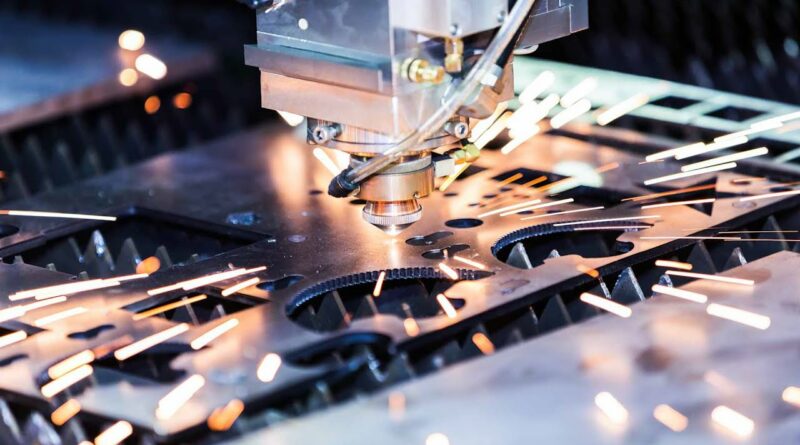The Ultimate Guide to Metal Sheet Fabrication: Processes, Techniques, and Applications
Introduction to Metal Sheet Fabrication
Metal sheet fabrication is a crucial process in manufacturing, enabling the creation of intricate metal structures and components used in various industries. From automotive and aerospace to construction and electronics, metal sheet fabrication plays an essential role in modern industrial applications. This guide will explore the process, techniques, tools, and applications of metal sheet fabrication, providing valuable insights into this indispensable manufacturing technique.
What is Metal Sheet Fabrication?
Metal sheet fabrication is the process of transforming flat sheets of metal into desired shapes and structures through cutting, bending, welding, and assembling. This process involves various techniques and specialized tools to achieve precision and efficiency in metalworking.
Key Steps in Metal Sheet Fabrication
The metal sheet fabrication process involves several steps, each critical to producing high-quality metal components. Here are the key stages:
1. Design and Planning
Before fabrication begins, engineers and designers use Computer-Aided Design (CAD) software to create detailed blueprints of the metal component. This ensures accuracy and efficiency in production.
2. Material Selection
Choosing the right material is crucial for achieving the desired properties. Common metals used in sheet fabrication include:
- Stainless Steel – Corrosion-resistant and durable, ideal for medical and food-grade applications.
- Aluminum – Lightweight and strong, commonly used in aerospace and automotive industries.
- Carbon Steel – High strength and affordability, often used in construction and heavy machinery.
- Copper and Brass – Excellent conductivity, suitable for electrical components.
3. Cutting
Cutting is the first major step in shaping metal sheets. Various cutting techniques include:
- Laser Cutting – Uses a high-powered laser to create precise cuts with minimal waste.
- Plasma Cutting – Ideal for thicker metals, offering high-speed cutting.
- Water Jet Cutting – Uses high-pressure water mixed with abrasives to cut through metal without heat distortion.
- Shearing – A mechanical process that slices through metal sheets using a sharp blade.
4. Bending and Forming
After cutting, metal sheets are bent and shaped using specialized machines:
- Press Brakes – Apply force to bend metal into predetermined angles.
- Roll Forming – Uses rollers to shape metal sheets into continuous curves or complex geometries.
- Stamping – A process that presses the metal into specific shapes using a die.
5. Welding and Joining
Welding and fastening techniques help assemble fabricated metal sheets into final products:
- MIG and TIG Welding – Common welding techniques for joining metal components.
- Riveting – Uses metal fasteners for non-welded joints.
- Adhesive Bonding – Uses industrial adhesives for lightweight and flexible assemblies.
6. Finishing and Surface Treatment
Finishing enhances the durability and aesthetics of metal products:
- Powder Coating – Adds a protective and decorative layer.
- Anodizing – Increases corrosion resistance, especially for aluminum.
- Electroplating – Coats the metal with another metal layer for improved durability and conductivity.
- Polishing and Sandblasting – Enhances surface smoothness and appearance.
Applications of Metal Sheet Fabrication
Metal sheet fabrication is widely used across multiple industries, including:
1. Automotive Industry
- Car body panels and chassis components
- Exhaust systems and heat shields
- Engine brackets and structural reinforcements
2. Aerospace Industry
- Aircraft fuselage and wing components
- Structural reinforcements and brackets
- Precision-engineered parts for avionics
3. Construction and Architecture
- Metal roofing and siding panels
- Structural beams and support frameworks
- HVAC ducting and ventilation systems
4. Electronics and Electrical Industry
- Computer enclosures and casings
- Electrical panels and switchgear boxes
- Heat sinks and conductive components
5. Medical and Healthcare Industry
- Surgical instruments and medical device enclosures
- Hospital equipment and furniture
- Stainless steel sanitary fittings
Advantages of Metal Sheet Fabrication
Metal sheet fabrication offers numerous benefits, making it a preferred choice for industrial applications:
- Durability – Fabricated metal components withstand harsh environments and heavy usage.
- Precision – Advanced fabrication techniques ensure accurate and high-quality production.
- Versatility – Suitable for a wide range of applications and industries.
- Cost-Effective – Mass production reduces overall manufacturing costs.
- Customization – Metal sheets can be tailored to meet specific design requirements.
Latest Trends in Metal Sheet Fabrication
The metal fabrication industry is evolving with technological advancements:
- Automation and Robotics – CNC machines and robotic welding improve precision and efficiency.
- 3D Metal Printing – Additive manufacturing for complex geometries and rapid prototyping.
- Sustainable Fabrication – Eco-friendly materials and energy-efficient processes.
- AI and IoT Integration – Smart manufacturing for real-time monitoring and process optimization.
Conclusion
Metal sheet fabrication is an essential process that drives innovation in various industries. With advanced technology and evolving techniques, metal fabrication continues to play a crucial role in manufacturing high-quality components. Whether for automotive, aerospace, construction, or medical applications, understanding the fundamentals of metal sheet fabrication can help businesses optimize production and achieve superior product quality.




